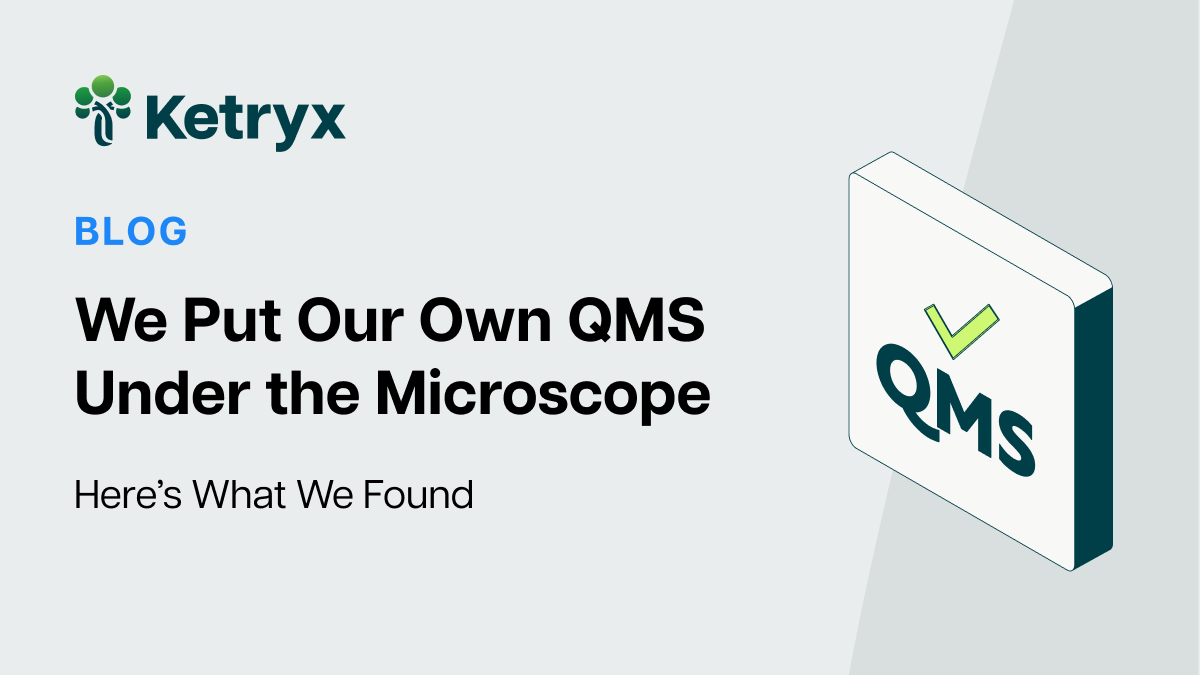
Best Practices for Maintaining a Requirement Traceability Matrix in Agile
Table of Contents
Agile methodologies have become the go-to approach for their ability to enhance collaboration, flexibility, and productivity as software development demands faster releases. In Agile, the Requirement Traceability Matrix (RTM) plays a crucial role in maintaining transparency and ensuring that all requirements are met during each sprint. For regulated software that requires FDA approval, a well-maintained RTM is even more critical as it aids in demonstrating compliance, facilitating audits, and ultimately expediting the path to market as your team’s development pushes forward.
Because of the extensive documentation needed for regulated software, best practices for managing and updating the Requirement Traceability Matrix in an Agile environment can overwhelm teams that need to release changes and versions quickly.
What is agile software development?
At its core, Agile is a modern and iterative approach to software development that prioritizes flexibility, collaboration, and continuous improvement. It emphasizes delivering value to customers in smaller increments over fixed, long-term planning to support developer responsiveness to necessary changes. Agile methods focus on adapting to change and responding to customer needs efficiently. A more comprehensive list includes:
- Iterative and Incremental Development
- Cross-functional Teams
- Continuous Customer Involvement
- Emphasis on Communication and Collaboration
- Adaptability to Change
- Continuous Improvement
Requirement Traceability Matrices and Agile Environments
Requirement traceability, which is required by the FDA according to the latest new guidance on premarket submission content, refers to the ability to trace each requirement back to its origin and to its implementation and testing. These pathways ensure that all software components are linked to corresponding business needs and help teams monitor progress, validate completeness, and identify any gaps in requirements coverage. Requirements Traceability Matrices (RTMs) In regulated environments where compliance is crucial, a well-maintained RTM is essential for demonstrating the fulfillment of regulatory requirements. Agile environments are necessary for regulated software teams, who need to be able to respond to issues that could potentially cause harm immediately. However, documenting traceability for every component and change is daunting, so what are the best practices for implementing RTMs in Agile?
How do I manage my RTM in Agile?
1. Start with Clear and Measurable Requirements
The foundation of a successful RTM lies in having well-defined, clear, and measurable requirements. Work closely with stakeholders, product owners, and subject matter experts to ensure that requirements are unambiguous, testable, and properly documented. When the requirements are clear from the beginning, it becomes easier to maintain accurate traceability throughout the development process. Luckily, there are tools to help with this process.
2. Utilize Automated Tools
In an Agile environment, where change is frequent, manual maintenance of the RTM can be a daunting and error-prone task. Leveraging automated tools can significantly simplify the process and reduce the risk of human errors. There are several traceability tools available that can help capture, track, and manage requirements, user activities, epics, and sprints while ensuring consistency across the development lifecycle.
These tools can automatically link features to specific requirements and update the RTM whenever changes occur, making it easier to keep the matrix up-to-date and maintaining an accurate trail of requirements even in the Agile development process.
3. Involve the Entire Team
Maintaining a requirement traceability matrix should not be the sole responsibility of a single team member. Instead, it should be a collaborative effort involving the entire Agile team, including product owners, developers, testers, and business analysts.
When everyone is actively engaged in keeping the RTM up-to-date, there is a higher level of accountability and ownership, which leads to better compliance and an increased understanding of how each requirement contributes to the final product.
4. Incorporate Traceability Across User Stories, Epics, and Sprints
To ensure comprehensive traceability, it is crucial to establish links between user stories, epics, and sprints, and the original requirements. Each user story should reference the corresponding requirement(s) it addresses, and each epic should be linked to its related user stories. This linkage helps maintain a clear and well-structured hierarchy within the RTM, making it easier to track progress and identify potential gaps.
5. Regularly Review and Update the RTM
An RTM is not a static document but rather a living artifact that evolves with the software development process. Regularly review and update the matrix as new requirements emerge, existing ones change, or scope adjustments are made during each sprint. Conducting frequent RTM reviews ensures that the traceability remains accurate and comprehensive, allowing the team to address any issues or deviations promptly.
6. Document Changes and Rationale
In regulated software development, documentation is of utmost importance. When changes occur in the RTM, ensure that the reason for each modification is thoroughly documented. This documentation not only aids in compliance audits but also helps the team understand the context behind specific changes, making future updates more informed and efficient.
7. Conduct Compliance Audits and Reviews
For regulated software that requires FDA approval, compliance audits are standard practice. Having a well-maintained and accurate RTM streamlines the auditing process, providing auditors with the necessary evidence of compliance. Regular internal reviews can also help identify any gaps or discrepancies, allowing the team to address them proactively.
8. Don’t Use Excel or Manual Documentation
Excel can no longer manage RTMs for modern software. You’ll find templates (like this one) that enable teams to create manual RTMs. However, we strongly discourage using RTMs of this nature as they are error-prone, extremely time consuming, and difficult to maintain.
By following these best practices, organizations can establish a robust RTM that not only aids in achieving regulatory approval but also enhances collaboration and transparency within the Agile development process. Remember, a well-maintained RTM is not just a regulatory requirement; it is a powerful tool that helps teams deliver high-quality software that meets business needs effectively.
Want to learn more about effective RTM tools? Read our article, "The Best RTM Tools for Agile Teams: Looking Beyond Excel."

Jake brings experience that fuses technology and quality systems. His professional journey began in operations, fostering a deep understanding of complex, safety-critical systems; prior to Ketryx, he was a manager in a GMP pharmaceutical plant at Amgen. This foundation has profoundly shaped his approach to tech, where he currently serves as the Vice President of Client Operations at Ketryx. Jake holds an MBA in Operations and Logistics and a Master's degree in Systems Engineering from MIT, where he was a Leaders for Global Operations (LGO) Fellow.



